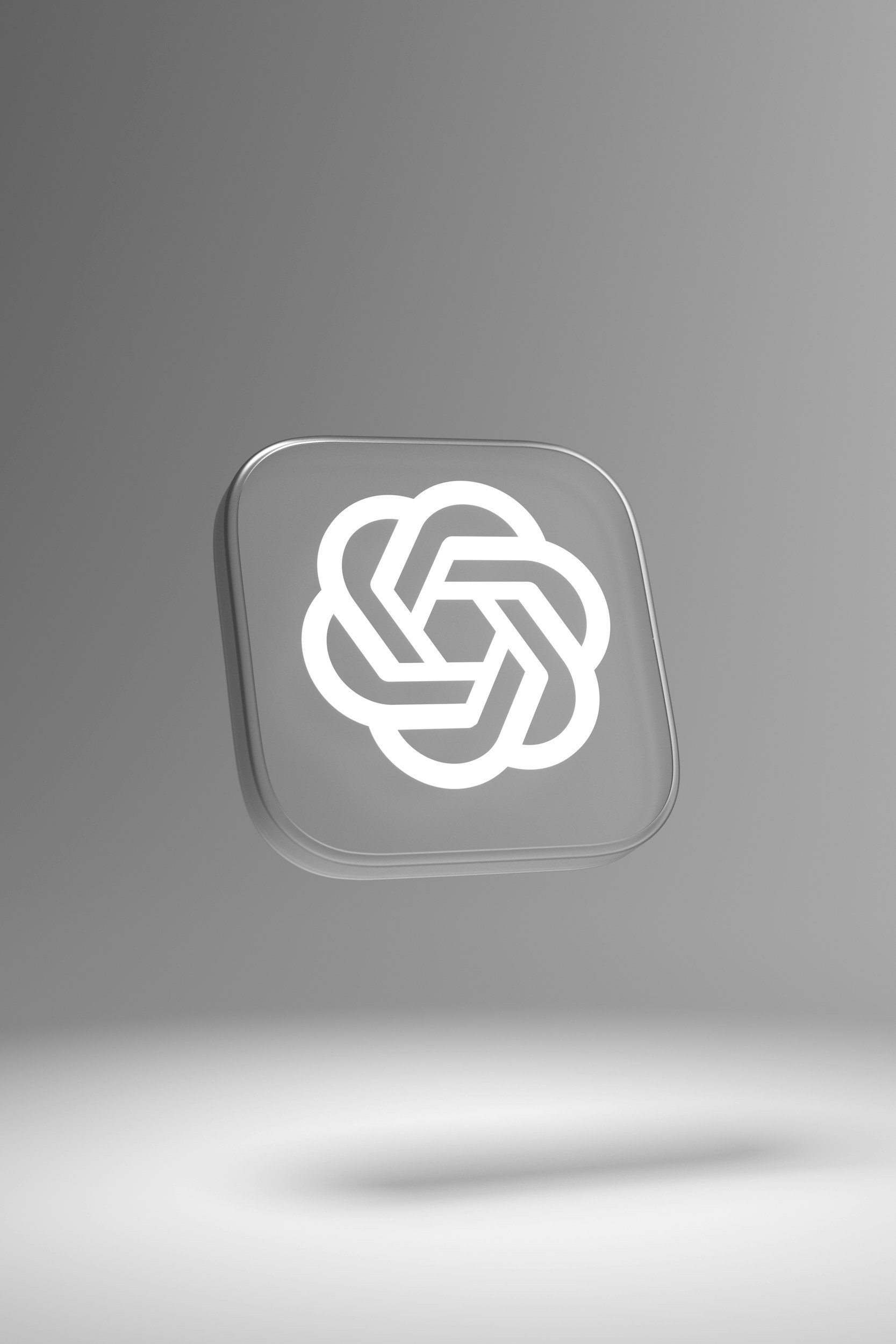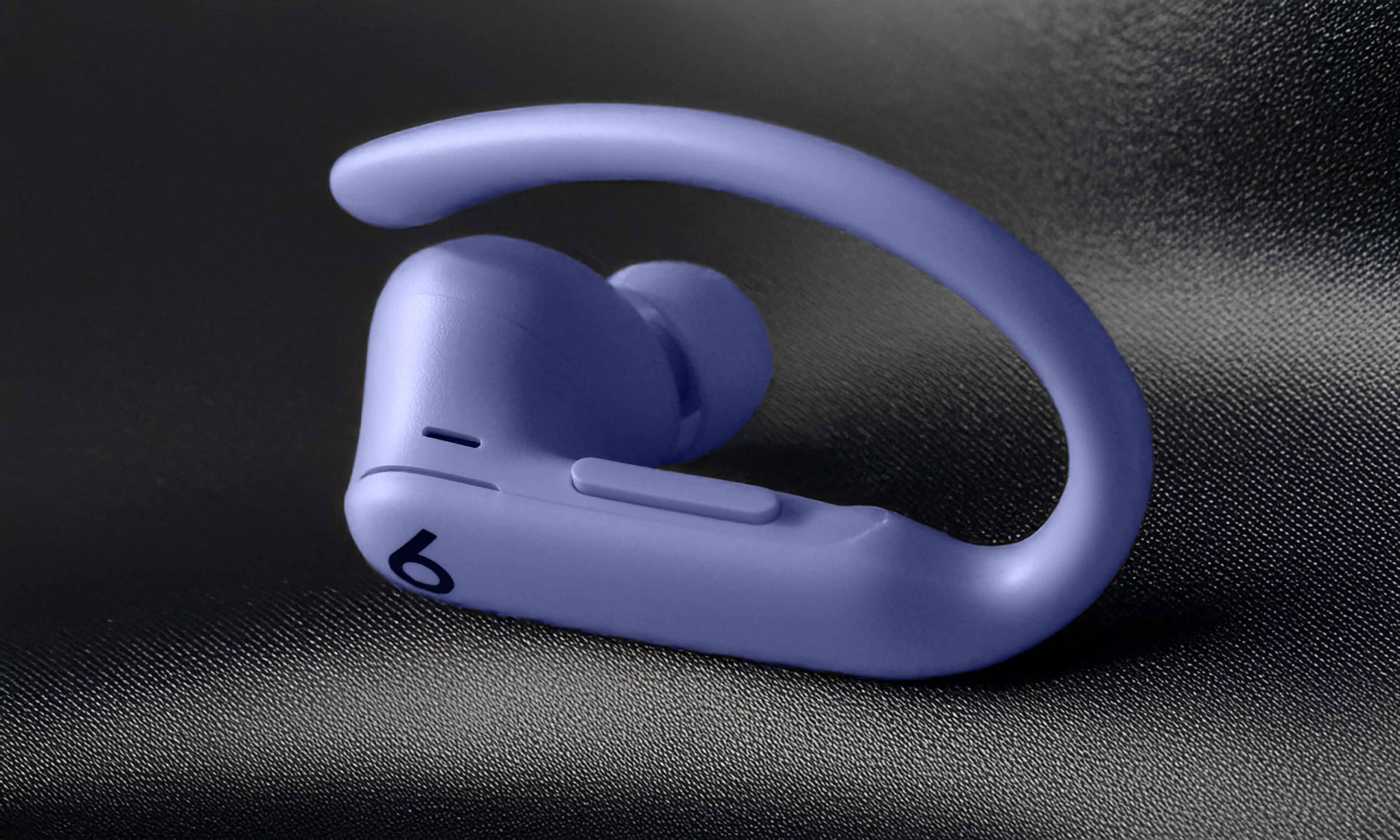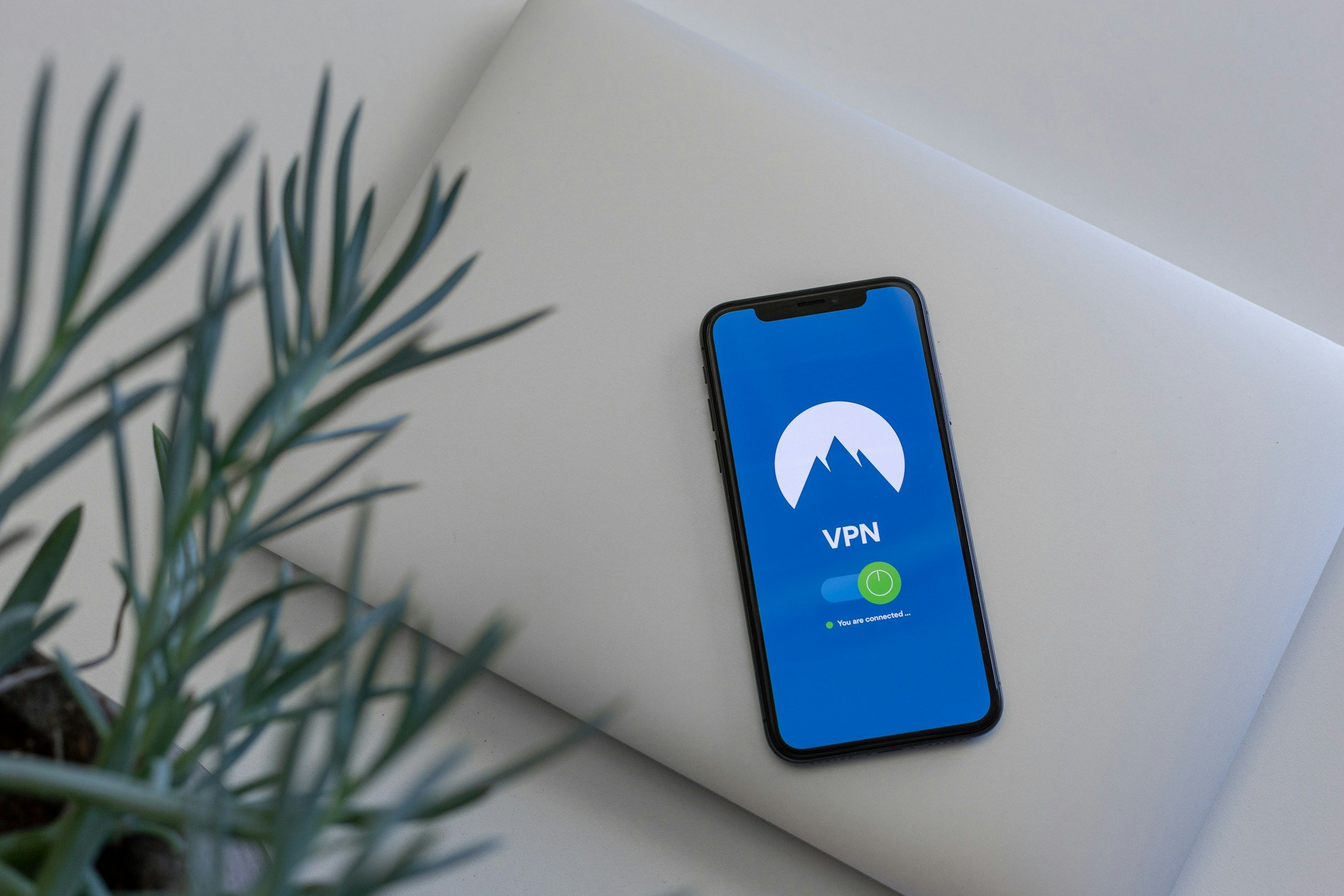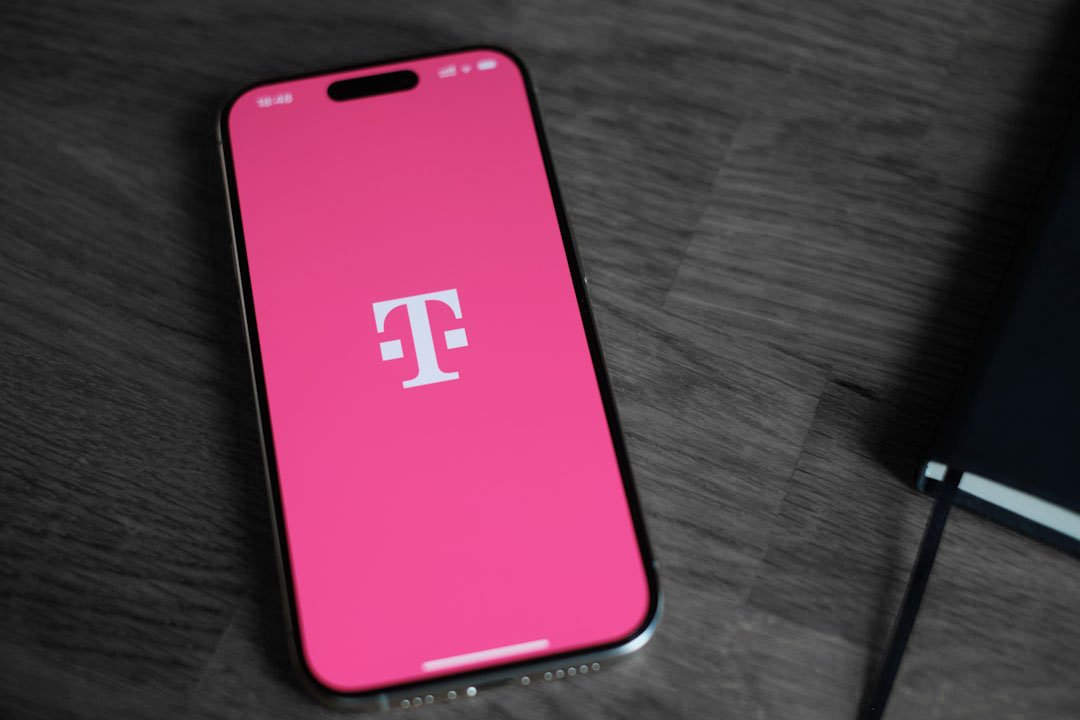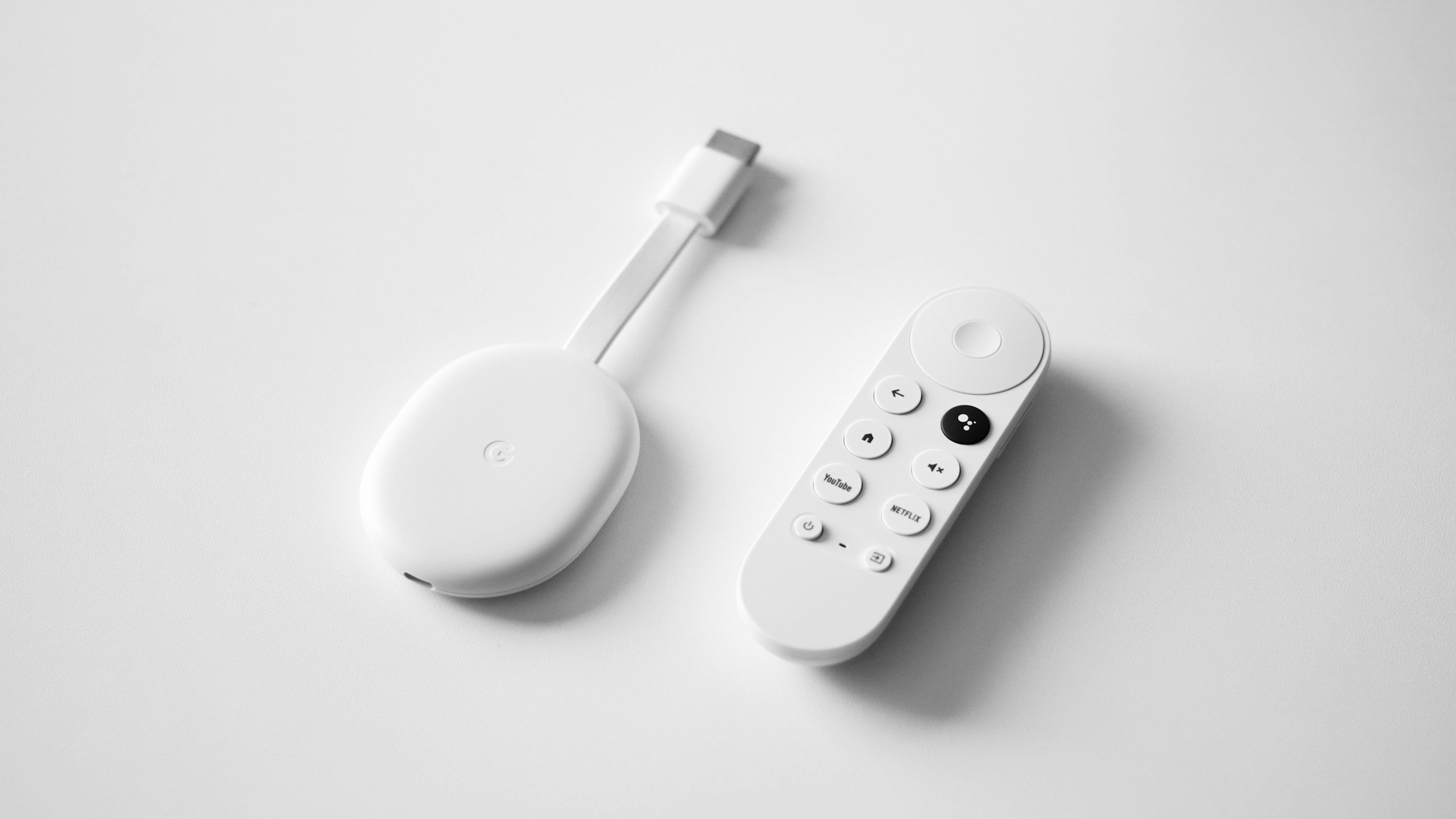How to Fix Black Lines on the Bottom Screen of Your MacBook Pro
When you purchase through links on my site, I may earn an affiliate commission. Here’s how it works.
Table of Contents Show
Firing up your MacBook Pro only to be greeted by unsightly black lines across the bottom of the screen can really throw a wrench in your day, particularly when your device is relatively new and damage-free.
It's a very annoying problem, but before you rush off to an Apple service center, there are a few troubleshooting techniques you might want to explore.
These steps could potentially save you a trip and get your MacBook Pro back to its pristine condition.
So, let's get into what's causing this, and most importantly, how to fix it.
1. Restart Your MacBook Pro
Before you start worrying about heavy-duty repairs or considering a visit to the Apple Store, there's one simple trick that might just solve your problem: restarting your MacBook Pro.
Yes, it sounds too good to be true, but sometimes, the simplest solutions are the most effective.
Over time, minor software glitches can accumulate, causing various display issues, including those pesky black lines.
By performing a restart, you're essentially giving your MacBook a fresh start, clearing out any temporary glitches that might be affecting its performance.
Why a Restart Can Be Surprisingly Effective
Flushes RAM
First up, every time you restart your MacBook, it's like giving your system's RAM (Random Access Memory) a fresh start.
Think of RAM as your MacBook's short-term memory where it keeps stuff it's currently working on.
Over time, this memory can get cluttered with all sorts of temporary files and data junk, which might be the culprits behind those black lines on your screen.
A reboot clears out that digital clutter, potentially smoothing over any software conflicts messing with your display.
Resets Hardware
But it's not just about the software. A restart also gives the hardware a chance to reset itself.
Yep, even the physical components of your MacBook, including the display, get a fresh start.
This can be super helpful if there’s a minor miscommunication between your MacBook's brain (the software) and its body (the hardware) that’s causing those black screen lines.
Software Refresh
Last but not least, rebooting ensures that all those system processes that quietly run in the background get to start from scratch too.
Sometimes, one of these background processes decides to throw a tantrum, affecting your screen in the process.
Restarting your MacBook is like saying, "Hey, let's all calm down and try this again," which could be all it takes to get rid of those screen issues.
How to Restart a MacBook Pro
Performing a restart on your MacBook Pro is straightforward.
Access the Apple Menu
Click on the Apple logo located in the top-left corner of your screen.
This will open the Apple menu, which provides various system options.
Select "Restart"
From the dropdown menu, locate and select the "Restart" option.
Confirm the Restart (Optional)
A dialog box may appear asking if you're sure you want to restart your computer.
If you have any unsaved work, this is a good time to save it.
You can either proceed by clicking "Restart" in the dialog box or cancel if you need a moment to close out of apps and save files.
Wait for the Restart to Complete
Once confirmed, your MacBook Pro will begin the restart process.
You'll see your screen go black for a moment before the Apple logo appears, indicating that the computer is booting up again.
Log Back In (If Required)
Depending on your settings, you might be taken directly to your desktop or asked to log in.
If prompted, enter your password to access your account and resume using your MacBook Pro.
2. Boot into Safe Mode and Run Disk Utility
Booting into Safe Mode and running Disk Utility are crucial steps in diagnosing and potentially fixing the black lines on your MacBook Pro screen.
These methods allow you to isolate the issue, determining whether it's software-related – which these steps can often resolve – or if it's a more serious hardware problem that might require professional repair.
How to Boot into Safe Mode on MacBook Pro
First off, let's talk about Safe Mode. Booting your MacBook Pro into Safe Mode is like putting it through a diagnostic check-up.
It starts your system with the minimum necessary processes and prevents third-party software from automatically loading.
This can be particularly helpful because it allows you to determine if the issue with the black lines is related to software conflicts or is more deeply rooted in your hardware.
For Intel MacBook Pro
Restart Your MacBook
If your MacBook is currently on, you need to restart it.
This can be done by clicking on the Apple logo at the top left of your screen and selecting 'Restart'.
Engage the Shift Key
As your MacBook restarts, press and hold the Shift key.
It's important to do this immediately after initiating the restart to ensure the process works correctly
Release the Shift Key
Continue holding the Shift key until you see the login window appear. This may take a moment, so patience is key.
Once you see the login window, you can release the Shift key.
Log In
Log into your account. Remember, logging in while in Safe Mode might take longer than usual, but this is entirely normal.
Confirm You're in Safe Mode
Once logged in, you can confirm that you're in Safe Mode by looking for "Safe Boot" in red letters at the top right corner of your screen.
For Apple Silicon MacBook Pro
Power Up or Restart
If your MacBook is off, turn it on by pressing the power button.
If it's on, restart it by clicking the Apple logo and choosing 'Restart'.
Hold the Power Button
Upon restarting, hold down the power button.
Keep holding until you see the startup options window, which may take a few seconds.
Select Your Startup Disk
Look for your startup disk icon in the startup options window.
It usually appears next to a gear icon labeled 'Options'. Click on your startup disk.
Enter Safe Mode
With the startup disk selected, press and hold the Shift key.
While holding the Shift key, click 'Continue in Safe Mode', and then release the Shift key.
Log In
Log into your account. As with the Intel method, logging in may take longer than usual due to being in Safe Mode.
Confirm You're in Safe Mode
Check the top right corner of your screen for "Safe Boot" in red letters to confirm that you're in Safe Mode.
Your MacBook Pro has been successfully switched to Safe Mode.
To exit Safe Mode, just reboot your MacBook Pro, and it will return to the standard macOS environment.
How to Start Disk Utility on MacBook Pro
Now, onto the next step: Disk Utility. Think of Disk Utility as your MacBook's “personal doctor”, ready to diagnose and treat issues with your hard drive.
Running this tool can help fix problems that might be causing those black lines on your screen by repairing disk permissions and resolving disk errors.
Open Finder
Click on the Finder icon in your dock to open a new Finder window.
Navigate to Applications
In the Finder sidebar, click on "Applications" to view the applications installed on your MacBook.
Go to Utilities
Scroll down in the Applications folder until you find the "Utilities" folder. Click to open it.
Launch Disk Utility
Inside the Utilities folder, look for "Disk Utility" and double-click to open it.
Select Your Startup Disk
In the Disk Utility window, you'll see a list of disks and volumes on the left side.
Your startup disk, typically named "Macintosh HD" (unless you've renamed it), should be listed there. Click to select it.
Run First Aid
With your startup disk selected, locate the "First Aid" button in the Disk Utility toolbar. Click on "First Aid."
Confirm First Aid
A prompt will appear asking if you're sure you want to run First Aid. Confirm by clicking "Run" or "Continue" (the exact wording may vary).
This action permits Disk Utility to start checking your disk for errors.
Let Disk Utility Work
Disk Utility will now check your disk for errors and attempt to repair any issues it finds.
This process can take some time, depending on the size of your disk and the nature of any errors, so patience is key.
Review Results
Once Disk Utility has finished its checks, it will display a summary of its findings and the actions taken.
If it was able to repair your disk, it would inform you of the repairs made.
If no issues were found, it would also let you know.
Close Disk Utility
After reviewing the results, you can close Disk Utility.
If it made repairs, it's a good idea to restart your MacBook to ensure all changes take effect.
3. Reset Your SMC (Only for Intel-based MacBook Pros)
Let's talk about resetting your System Management Controller, or SMC for short.
This is a step that could potentially solve your problem with black lines at the bottom of your MacBook Pro screen.
Note: When restarting Apple Silicon MacBook Pros, the SMC will reset automatically.
Not sure if you've got an Apple Silicon MacBook Pro? Check out Apple's guide to find out if that's what you've got.
What Is SMC?
First things first, let's break down what the SMC actually does.
The System Management Controller is a chip in your MacBook Pro that controls all sorts of physical parts of the machine, including the cooling fan, battery management, and yes, even some aspects of the display functionality.
It's like the behind-the-scenes maestro making sure everything runs smoothly.
Why Reset the SMC?
You might be wondering, "Why would resetting the SMC affect the display?"
Well, although black lines on the screen can often be a sign of hardware issues like a faulty display cable or a damaged LCD panel, they can also be the result of less obvious software or firmware conflicts that the SMC manages.
For example, if your MacBook Pro is overheating due to mismanagement of the cooling system, this can lead to graphical glitches such as those black lines.
Resetting the SMC can help by restoring default settings and potentially resolving any miscommunications causing the issue.
How to Reset the SMC on MacBook Pro
Resetting the SMC is a bit different depending on whether your MacBook Pro has a removable battery, a non-removable battery, or if it's a model with the Apple T2 Security Chip.
Most newer models will fall into the latter two categories.
If you're uncertain about whether you have a T2 Chip, feel free to check here.
For Macs with the Apple T2 Security Chip:
Power Down
Ensure your Mac is completely turned off.
Key Combination for Reset
On the built-in keyboard, press and hold the Control key (left side), Option (Alt key - left side), and Shift key (right side).
This might cause your Mac to begin starting up.
Introduce the Power Button
Continue holding those three keys for 7 seconds, then press and hold the power button as well.
If your Mac was on, it will shut down as you do this.
Hold Duration
Keep all four keys pressed down for another 7 seconds. Then release them all at the same time.
Restart
After waiting a few seconds, press the power button to turn your Mac back on.
For Older Intel-based Macs without the Apple T2 Security Chip:
Shut Down Your Mac
Make sure your Mac is completely powered off.
Prepare Key Combination
Using the built-in keyboard, press and hold the Shift key (left side), Control key (left side), and Option (Alt key - left side).
Power Button Involvement
While keeping those three keys held down, press and hold the power button as well.
Key Holding Duration
Maintain pressing all four keys simultaneously for about 10 seconds.
Release and Restart
Let go of all the keys, then press the power button to switch your Mac back on.
4. Reset NVRAM/PRAM (Only for Intel-based MacBook Pros)
If previous solutions haven't worked, it might be time to dive a little deeper into your MacBook's toolbox.
Let's talk about resetting NVRAM/PRAM.
What is NVRAM/PRAM?
Before we get into the how-to, let's quickly cover what we're actually talking about.
NVRAM (non-volatile random-access memory) and PRAM (Parameter RAM) are small amounts of memory that your Mac uses to store certain settings in a location that macOS can access quickly.
These settings include things like your screen resolution, time zone, volume settings, and more importantly for our purposes, some display settings that could be causing those black lines.
Why Reset NVRAM/PRAM?
Resetting your NVRAM or PRAM (the terms are often used interchangeably, but they're essentially the same thing on modern Macs) can resolve issues because it clears out all these settings and forces your MacBook to recreate them from scratch.
Think of it as giving your Mac's memory a fresh start, which can sometimes iron out display glitches that cause black lines to appear.
How to Reset Your NVRAM/PRAM
Resetting your MacBook Pro's NVRAM/PRAM is surprisingly simple and doesn't require any tools or external software.
Here's a step-by-step guide:
Shut down your MacBook Pro
Make sure it's completely powered off, not just asleep.
Power it on and immediately press and hold these four keys together
Option, Command, P, and R.
You need to get these keys pressed before the gray screen appears; timing is key here.
Hold these keys for about 20 seconds
During this time, your MacBook may appear to restart.
You can release the keys after the second startup sound or after the Apple logo appears and disappears for the second time.
Let your MacBook Pro boot up normally
Once it's restarted, you'll need to adjust any settings that were reset, like your screen resolution, time zone, and volume levels.
5. Disable Automatic Graphics Switching on MacBook Pro
Now, if you're still experiencing graphics issues try this little trick known as disabling Automatic Graphics Switching.
What Is Automatic Graphics Switching?
First, let's talk about what Automatic Graphics Switching is. Your MacBook Pro is pretty smart.
It's designed to switch between two graphics processors – one that's high performance and another that's more energy-efficient.
The idea here is to give you the best balance between performance and battery life.
But sometimes, this switching can cause graphics issues, including those annoying black lines on your screen.
Why Disable It?
Disabling Automatic Graphics Switching forces your MacBook to use the high-performance graphics processor all the time.
While this might consume more battery, it often resolves complex graphics issues and could be the solution to getting rid of screen glitches.
If you're often plugged in or you prioritize performance over battery life, this is definitely something to consider.
How to Disable Automatic Graphics Switching
Alright, let's walk through the steps to turn off this feature and potentially solve your display woes:
Open System Preferences
Click on the Apple menu at the top left corner of your screen and select "System Preferences."
This is your control center for adjusting anything and everything on your Mac.
Navigate to Battery Settings
Depending on your macOS version, you'll either look for "Energy Saver" (macOS Catalina 10.15 and earlier) or directly for "Battery" in the System Preferences window.
The naming has evolved, but the functionality remains the same.
Find the Option
Once you're in the Battery or Energy Saver settings, look for an option labeled "Automatic graphics switching" or something along those lines.
The exact wording can vary slightly depending on your macOS version, but you're looking for the setting that controls the switching between graphics processors.
Disable It
Simply uncheck the box next to "Automatic graphics switching" to disable it.
This action tells your MacBook Pro to stick with the high-performance graphics processor at all times.
Restart Your MacBook Pro
As with most settings changes, it's a good idea to restart your device to ensure the changes take full effect.
Additional Information on Graphics Switching
External Display Connection
When you hook up an external display to your Mac, it automatically switches to using the high-performance graphics processor until you unplug the display.
This happens because the high-performance GPU is better at handling the extra demands of running multiple screens at once.
Graphics Settings Unchangeable
If you're not finding the automatic graphics switching option in your settings, it likely means your computer runs on just one graphics system.
This suggests your Mac can't toggle between a low-power integrated graphics processor and a high-performance one, as it's equipped with only one of these.
6. Check Your Cables / External Monitor
Those black lines still appear? Let's break down the steps you should take to ensure that your cables and external monitors aren't contributing to the issue.
Step 1: Check Your Cables
First of all, let's talk about cables. It might seem like a no-brainer, but the simplest solutions are often overlooked.
If you're using an external display with your MacBook Pro, a faulty or loosely connected cable could be the culprit behind those pesky black lines. So, what do you do?
Inspect the Cable
Take a close look at the entire length of your cable for any signs of wear and tear.
Bends, frays, or cuts in the cable can affect its performance.
Ensure a Secure Connection
Make sure both ends of the cable are securely plugged in.
A loose connection can lead to signal loss or interference, which might manifest as graphical glitches on your screen.
Try a Different Cable
If possible, swap out the current cable with another one.
This is a quick way to rule out whether the cable itself is defective.
Step 2: Connecting to an External Monitor
Now, if checking the cables didn't clear up the issue, the next step is to see how your MacBook Pro behaves when connected to an external monitor.
This step is crucial because it helps isolate the problem – is it your MacBook's display that's at fault, or is it something else?
Connect to an External Display
Hook up your MacBook Pro to another monitor.
This doesn't have to be anything fancy; any external screen that allows you to mirror or extend your MacBook's display will do the job.
Check for Lines
Once connected, keep an eye out for those black lines.
Do they appear on the external display as well, or are they absent?
This step is telling for a couple of reasons:
If the black lines appear on the external monitor, the issue might not be with your MacBook's display but rather with its graphics hardware or software settings.
If the black lines don't appear on the external monitor, it's likely that your MacBook's built-in display is the source of the problem.
7. Update Your macOS
Alright, we've explored a range of fixes, but there's one important step that shouldn't be overlooked – updating macOS.
Let's get into why this could be your golden ticket to a clear, line-free display.
Why Are macOS Updates Important?
Apple frequently releases updates for macOS. Each update comes packed with bug fixes, security enhancements, and sometimes, solutions to specific hardware issues like the one plaguing our screens.
How to Update macOS
Updating your macOS is straightforward, and here's a quick guide to ensure you're up to speed:
Backup Your Data
Before any major system update, make sure to backup your MacBook.
Whether it's Time Machine or a cloud-based service, safeguarding your data is key.
Open System Preferences
You'll find this by clicking on the Apple icon in the top-left corner of your screen.
Software Update
Once in System Preferences, navigate to "Software Update."
Your MacBook will then check for any available updates.
Download and Install
If an update is available, click "Update Now" to start the process.
This might take some time, so grab a coffee and a bit of patience.
Why This Might Work
You might wonder, how does an update fix black lines on the screen?
Well, if the issue stems from a glitch within the system's graphics handling or a compatibility issue between the hardware and the software, an update could resolve it by patching the glitch or improving compatibility.
Apple's developers are constantly working on refining the OS, and sometimes, the solution to our hardware woes is a simple software update.
8. Check for Overheating
Now let's dive into how you can monitor and reduce your MacBook's temperature to keep it running smoothly and, hopefully, line-free.
Why Heat?
It’s helpful to understand that MacBooks, like all electronics, generate heat during operation.
However, excessive heat can lead to hardware issues, including graphic glitches like those black lines.
Apple outlines the ideal ambient temperature for MacBooks to be between 50°F and 95°F (10° to 35°C).
Operating your device outside of these parameters can not only affect performance but potentially cause long-term damage.
How to Monitor Your MacBook's Temperature
Keeping an eye on your MacBook's temperature is the first step in troubleshooting overheating issues.
While macOS doesn't come with a built-in temperature monitor, you can use Terminal commands like
sudo powermetrics --samplers smc |grep -i "CPU die temperature"
to get a readout of your CPU's current temperature.
You could also check out tools like iStat Menus and coconutBattery to see how hot your Mac is running.
This gives you a baseline to understand how hot your MacBook gets during typical use.
Tips to Reduce Overheating
Improve Air Circulation
Ensure nothing's blocking the air vents on your MacBook. Using it on a flat, hard surface is ideal.
Soft surfaces like beds or laps can restrict airflow and contribute to overheating.
Minimize Active Programs
Running multiple programs or apps simultaneously can strain your MacBook's resources, increasing its temperature.
Close any applications you're not using to help keep things cool.
Check Activity Monitor
This utility lets you see which processes are consuming the most resources.
If a particular app or process is causing your MacBook to overheat, consider closing it or looking for an alternative.
Keep It Clean
Dust buildup inside your MacBook can obstruct airflow, making it harder for your device to cool down.
Regularly cleaning the air vents can help maintain optimal operating temperatures.
Consider an External Cooling Pad
If you're frequently pushing your MacBook to its limits, an external cooling pad can provide additional airflow, helping to reduce temperatures.
9. Reinstall Your macOS
Now, this isn't something to jump into without consideration, but it's a powerful troubleshooting step that can resolve not just display issues, but a host of other glitches by giving your system a fresh start.
When to Consider Reinstalling macOS
Before we get into the "how," let's talk about the "when."
Reinstalling macOS is a step you'd consider after you've tried all previous fixes.
If those black lines persist, it could indicate a deeper software issue, possibly within the operating system itself.
That's where a fresh macOS install comes into play.
Preparing for the Reinstallation
First things first, backup your data. I cannot stress this enough.
Whether you're using Time Machine or uploading your most important files to iCloud or another cloud service, ensuring your data is safe is paramount.
Doing a clean macOS install will not wipe your personal data on your MacBook Pro, but hey, better safe than sorry!
How to Reinstall macOS
Here's how to do it, tailored for different types of Macs.
For Macs with Apple Silicon:
Power Down and Restart
Begin by completely shutting down your MacBook Pro. To restart, press and hold the power button.
Keep holding until you see the startup options screen.
Access macOS Recovery
On the startup options screen, select "Options," then click "Continue" to enter macOS Recovery.
This environment is designed specifically for troubleshooting and system management tasks, including reinstalling macOS.
Authenticate
If prompted, choose an administrator account you have the credentials for, click "Next," and enter the password.
This step ensures that you have the necessary permissions to reinstall the OS.
Select 'Reinstall macOS'
Within the macOS Recovery environment, you'll find several utilities. Locate and select 'Reinstall macOS' from the list.
This option will initiate the process to reinstall the latest version of macOS that was previously installed on your Mac.
Proceed with Installation
Follow the on-screen instructions carefully. You'll need to choose the startup disk where macOS will be reinstalled and, if prompted, log in with your Apple ID.
The installation process will begin – just a heads-up, it might take a bit, so hang tight.
Complete Setup
Once the installation finishes, your MacBook Pro will restart.
You'll be greeted by the setup assistant, guiding you through selecting a country or region, connecting to Wi-Fi, and other initial setup steps.
Don't forget to bring back any saved data to get your Mac to its former state.
For Intel-based Macs:
Restart Your MacBook Pro:
Shut down your MacBook Pro, then turn it back on. Immediately press and hold Command (⌘) + R.
This command could change based on what you're looking for:
To reinstall the current macOS version, press Command-R.
Considering the latest macOS version? Choose Option-Command-R.
If you prefer the original macOS your Mac came with, go for Shift-Option-Command-R.
Enter macOS Recovery Mode
Keep holding the keys until you see an Apple logo or other symbol, indicating that your Mac is entering Recovery Mode.
This special mode provides access to utilities for diagnosing issues, repairing disks, and reinstalling macOS.
Choose 'Reinstall macOS'
From the macOS Recovery menu, select the 'Reinstall macOS' utility to start the reinstallation process.
You'll be guided through selecting a startup disk and possibly entering your Apple ID.
Follow Installation Steps
As the installer runs, it will take some time to complete.
Ensure your MacBook Pro remains powered on and connected to the internet throughout this process.
Finish Setup
After installation, your Mac will restart.
Follow the prompts in the setup assistant to configure your freshly installed macOS, including language selection, network setup, and data restoration from backups if needed.
10. Contact the Apple Support
So, you've tried everything. You rebooted your MacBook Pro, messed with the display settings, and even tried cooling it down in case it's overheating.
But those stubborn black lines? They're still there. Super frustrating, I know.
Here's the thing, though: certain problems, like a faulty display cable or a damaged LCD panel, aren't the kind of thing you can just fix with a few clicks or by watching an online tutorial.
These are more complex hardware problems that really benefit from an expert's touch.
If your MacBook Pro is still under warranty or covered by AppleCare+, that's great news. Even if it's not, though, don't despair.
Getting in touch with Apple Support is still a smart move.
Here's why: they can diagnose the issue accurately and offer the most effective solutions based on their extensive knowledge and resources.
What to Expect from a Repair
When you decide to hand over your precious MacBook Pro to the professionals, what comes next?
Firstly, depending on your location and the availability of services, you might be directed to mail in your device or bring it to an Apple Store or an authorized service provider.
Once there, a technician will assess your MacBook Pro to confirm the cause of those black lines.
Now, let's talk repairs and costs. If it's determined that you need a cable replacement or even a full screen replacement, the cost can vary widely.
For instance, screen replacements for a MacBook Pro can be pretty pricey, especially if you're out of warranty.
We're potentially talking several hundred dollars here (400–700 Dollars).
However, prices can fluctuate based on the model of your MacBook Pro and the specific nature of the repair.
Here’s the silver lining, though: Apple's repairs are thorough. If they fix your MacBook Pro, it’s going to be done right.
Plus, any repair carried out by Apple or an authorized service provider comes with its own warranty, giving you peace of mind.
If you decide to go for an official screen replacement, you can find the link here.
11. Preventing Future Issues with Your MacBook Pro
Let’s break down some regular maintenance tips and protective measures to keep your MacBook Pro in prime condition.
Regular Maintenance Tips
Firstly, let’s talk maintenance because, truth be told, prevention is better than cure.
Keep It Cool
Overheating isn’t just uncomfortable for you; it’s one of the leading causes of display issues in MacBooks.
Make sure your device has adequate ventilation, especially during heavy use.
Avoid blocking the air vents, and consider using a cooling pad if you're pushing your MacBook to its limits with high-performance tasks.
Software Updates
Always keep your software up to date. Apple regularly releases updates that not only add new features but also fix bugs and improve performance.
These updates can prevent a multitude of issues, including those that affect your display.
Clean Regularly
Dust and debris are not just cosmetic issues; they can actually interfere with your MacBook Pro's ability to cool down properly and may even creep into sensitive areas, causing damage.
Use a soft, lint-free cloth to gently clean the screen and keyboard area. Avoid harsh chemicals or abrasive materials that could harm the screen coating.
Protective Measures
Now onto protection, because sometimes the best offense is a good defense.
Here’s how to shield your MacBook Pro from potential threats.
Use a Quality Case/Sleeve
Invest in a high-quality case or sleeve for your MacBook Pro.
This can protect your device from bumps, drops, and scratches that could lead not only to cosmetic damage but also internal harm.
Plus, it’s a great way to personalize your tech.
Screen Protectors
Consider applying a screen protector. They’re not just for phones; a good screen protector can shield your MacBook Pro’s display from scratches and potentially reduce the risk of screen damage.
Avoid Extreme Environments
Try to use and store your MacBook in environments with moderate temperatures.
Extreme cold or heat can affect battery life and screen performance.
Also, avoid using your MacBook in direct sunlight for extended periods, which can lead to overheating and display issues.
Mindful Usage
Be mindful of where and how you use your MacBook Pro.
Avoid placing heavy objects on top of it, and be careful with liquids around your device.
A simple spill can lead to significant damage, not just to the screen but to the internals as well.
Conclusion
And just like that, we tackled the annoying black lines on your MacBook Pro screen.
From the first surprise to troubleshooting steps to fix it without heading to Apple, we've covered it all.
Now, it's your turn. Have you faced this issue with your MacBook Pro? Were these solutions helpful, or did you stumble upon a different fix? Your journey and insights are invaluable, and I'd love to hear all about them.
Drop your stories and thoughts in the comments below or hit me up on social media. Let's keep the conversation going.
And hey, if you haven't signed up for my newsletter yet, now's the time. It's your one-stop-shop for the coolest tech tips, detailed reviews, and the latest happenings in the tech universe that you definitely don't want to miss out on.
Catch you on the next one. Thanks a lot for reading!
FAQ
-
Black lines can appear due to various reasons such as hardware issues (like a damaged display), software glitches, or even loose connections within the laptop.
Identifying the cause is the first step towards fixing the problem.
-
Yes, there are several DIY solutions you can try, such as resetting the NVRAM/PRAM, checking for software updates, or adjusting display settings.
However, if these steps don't work, it might be a hardware issue that requires professional attention.
-
It's possible. Software updates often come with bug fixes that can resolve display issues.
Always ensure your MacBook Pro is running the latest version of macOS.
-
If your MacBook Pro is still under warranty and the black lines are due to a manufacturing defect or hardware failure, it should be covered.
Contact Apple Support or visit an Apple Store for assistance.
-
If the black lines persist after trying all DIY fixes, it's best to consult with a professional.
An authorized Apple service provider can diagnose the issue accurately and suggest the appropriate repair or replacement options.
MOST POPULAR
LATEST ARTICLES





















